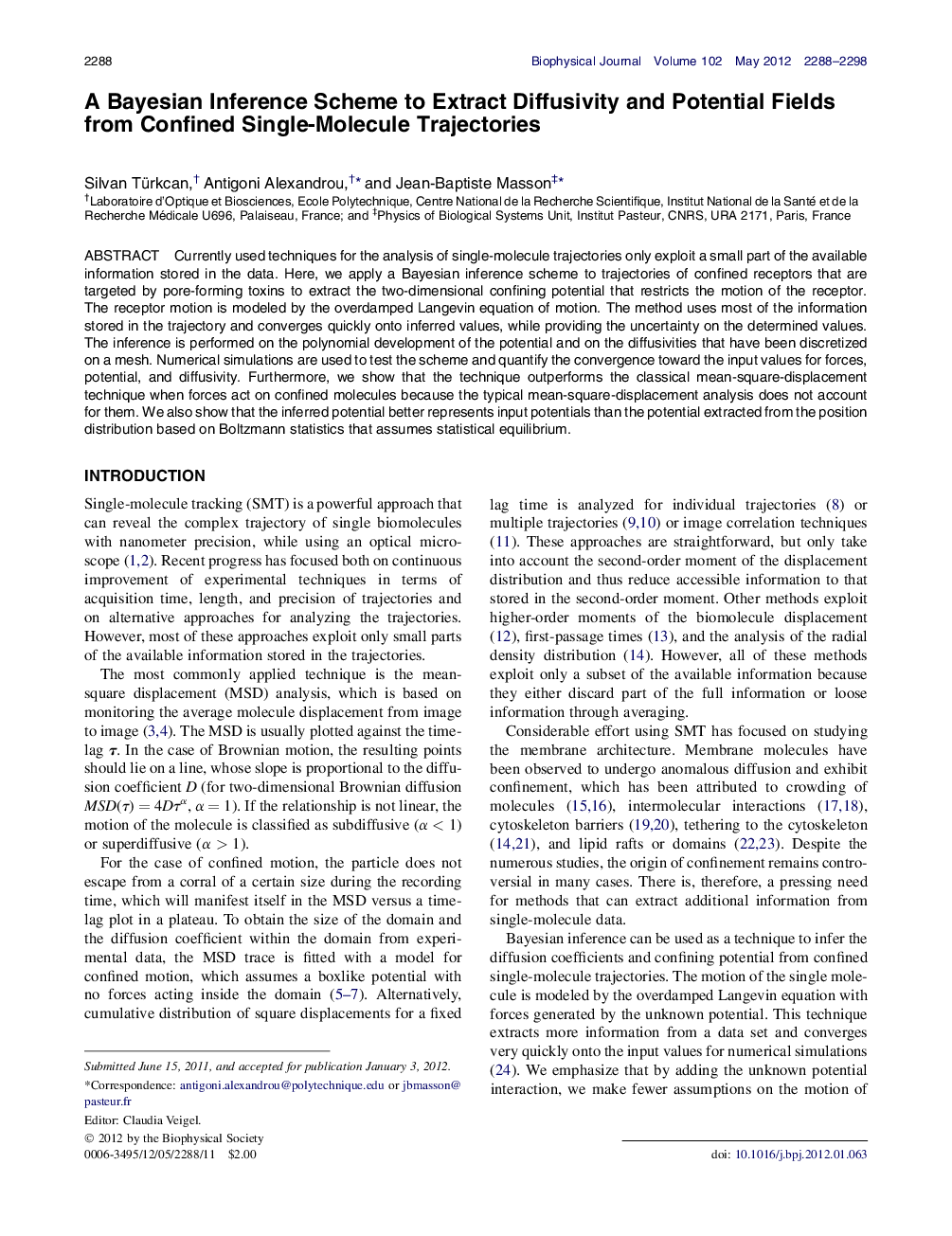| Article ID | Journal | Published Year | Pages | File Type |
|---|---|---|---|---|
| 1954546 | Biophysical Journal | 2012 | 11 Pages |
Currently used techniques for the analysis of single-molecule trajectories only exploit a small part of the available information stored in the data. Here, we apply a Bayesian inference scheme to trajectories of confined receptors that are targeted by pore-forming toxins to extract the two-dimensional confining potential that restricts the motion of the receptor. The receptor motion is modeled by the overdamped Langevin equation of motion. The method uses most of the information stored in the trajectory and converges quickly onto inferred values, while providing the uncertainty on the determined values. The inference is performed on the polynomial development of the potential and on the diffusivities that have been discretized on a mesh. Numerical simulations are used to test the scheme and quantify the convergence toward the input values for forces, potential, and diffusivity. Furthermore, we show that the technique outperforms the classical mean-square-displacement technique when forces act on confined molecules because the typical mean-square-displacement analysis does not account for them. We also show that the inferred potential better represents input potentials than the potential extracted from the position distribution based on Boltzmann statistics that assumes statistical equilibrium.
